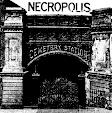Theme 004: Book Covers
When
the times on the screen above the ticket lobby rolled over to list Cassandra’s
train as a late arrival, she decided to wander along the promenade to the narrow
bookshop she had seen wedged between a deli and the main concourse. It would be
another seven hours altogether before she would arrive in the border town where
her grandmother’s funeral was to be held the next day, and though she had
plenty of coursework left to do in her satchel, she wanted something more diverting
from her mournful thoughts.
The
cover of a used copy of Agnes Grey slotted
at the top of a carrousel caught Cassandra’s eye immediately upon entering the
bookshop. It featured Manet’s Le Chemin
de fer, in which a young copper-haired woman sits on the stone
curb of an iron fence with a weathered book open in her lap. For some reason, her fingers are stuck in
several different sections of this book. A small white and sienna puppy lies asleep
on her forearm. She is wearing a black ladies hat affixed with ribbons and
flowers, a black choker, and an oxford blue dress with white buttons. To her
left, a honey blonde girl, perhaps six or seven years old, wearing a lacy white
dress with a blue bow, leans over the curb with her back to the viewer, her bare left
arm reaching to grasp one of the bars of the fence. She is looking out over
a train yard and station, identified as the Gare
Saint-Lazare, down below the fence, where
a great plume of white smoke has drifted over the tracks.
Cassandra took down the
book to inspect the painting more closely. She conjectured that the young
woman was the girl’s mother. She had taken her daughter out for an excursion through the park.
Along the way she had purchased a puppy that her daughter had begged for but had since forgotten, thus leaving the mother to swaddle
it. The book in the mother’s lap, Cassandra believed, was a romantic novel the mother had picked up to take her mind off of the cares of child-rearing. Without really
knowing anything about Anne Brontë’s novel, Cassandra decided to purchase the
copy of Agnes Grey with the loose cash left in her pocket.
Two
hours later, in a window seat aboard the coach-class car rumbling northward,
Cassandra turned Agnes Grey over to
look at the reproduction of Le Chemin
de fer again. Upon reaching the point at which Agnes is installed
in the Wellwood house to work for the Bloomfields, Cassandra came to
understand that for the purposes of the cover, the painting was intended to represent a governess and her charge. The governess was resting out of weariness from supervising the girl, who was clearly the spoiled
tyro of a wealthy family. It now seemed to Cassandra that the governess was
protecting the puppy from the abuse of the tetchy girl by harboring him in her
lap. The book she had her fingers in was a textbook full of Latin
sententiae and exercises, which she was reviewing to prepare future
lessons.
Three
days later, Cassandra finished the last page of Agnes Grey as the southbound train swayed into a curve running
toward a tunnel, on the far side of which she would see the vacant lots and
graffitied warehouses on the outskirts of her home city. She closed the book
and examined the cover once more. With the images of the novel’s funerary and marital
ceremonies drifting into those of the service she had just attended, she now perceived
an entirely different significance in the painting: the book cradled in the woman’s
lap was her life journal, consonant with that which made up the text of Agnes Grey. Her fingers holding multiple
places represented her premonitions about the future, as she had just reached
the threshold of full maturity, and her ruminations on the past, embodied in
the living person of little girl—who was in fact the woman herself, at a time when she was still
in awe of the powerful engines of society. Both the puppy and the book in the
woman’s lap, then, were symbols of life, held for a brief, uncertain moment in
one’s ambit.
Cassandra returned Agnes Grey to her satchel and leaned
back in her lumpy seat as the train entered the echoing, sightless tunnel.
Explanatory Postscript:
When I say “picked randomly,” I mean picked from a Master List that I’ve
compiled of 999 themes intended to serve as creative writing prompts (from the
following sources: 501
Writing Prompts; 25
Creative Writing Prompts; Examples
of Themes; List
of Themes; 365
Creative Writing Prompts; 100
Themes Challenge Writing Prompts; List
of Journal Ideas; and Top
10 Types of Story Themes). To pick a theme at random, I roll three
ten-sided dice (the first for the hundreds place digit, the second for the
tens, and the third for the singles) and find the theme under the number I have
rolled. If I hit a theme I have already written on, I roll again. If I ever
roll 000, I make up a theme. The Master List is a secret, so don’t ask for it.

No comments:
Post a Comment